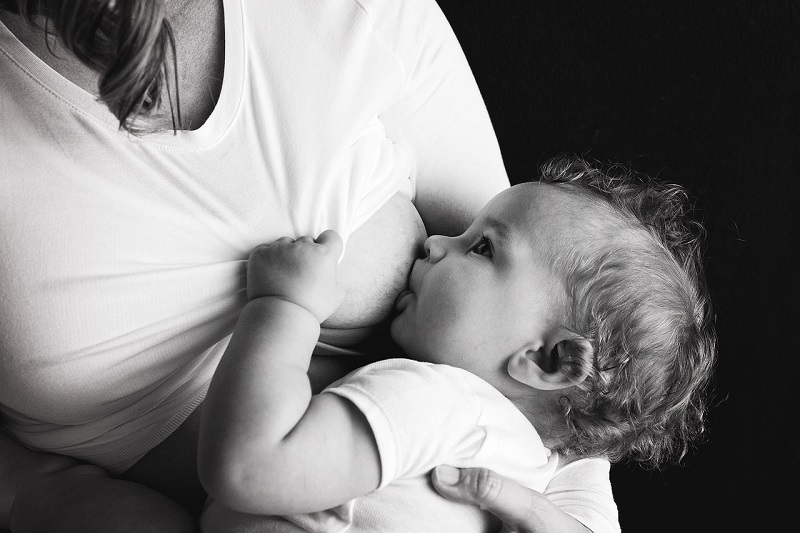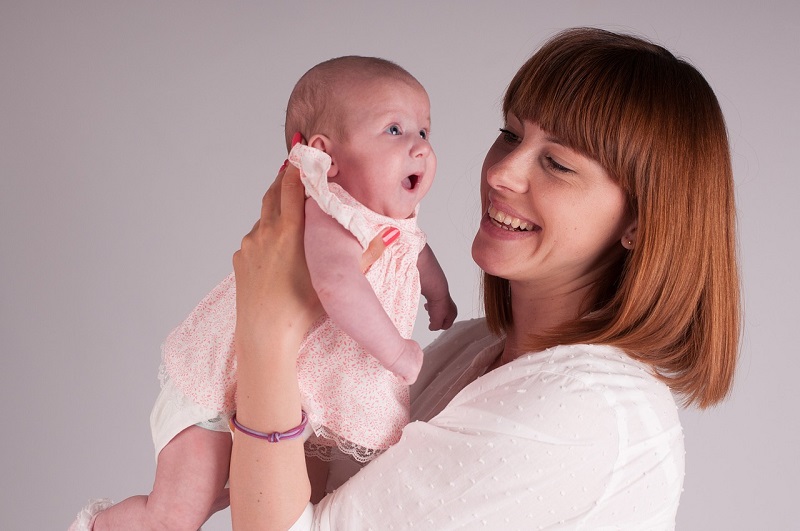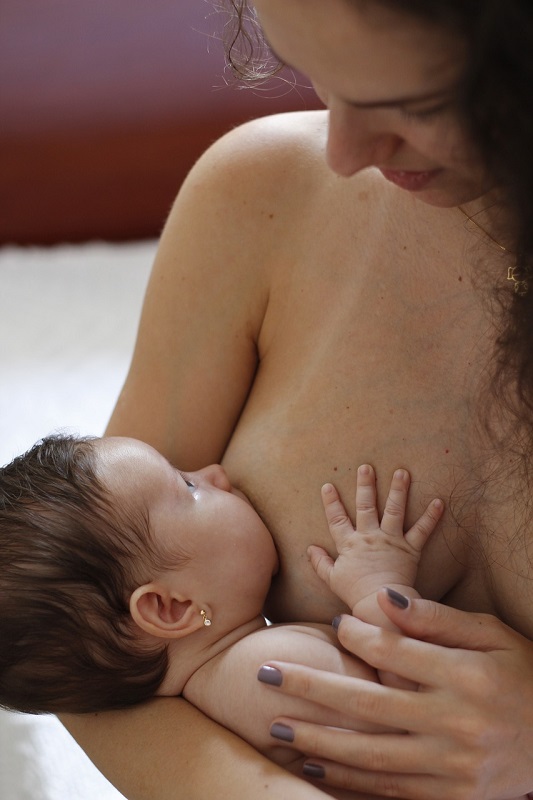Table of Contents:
What is engorgement and what are its symptoms?
When does engorgement usually occurs in young mothers and how long does it last?
What to do when you notice the first signs of engorgement?
How to cope with engorgement, without getting any serious problems?
Ways to cope with engorgement when your baby does not want to suck
What is engorgement and what are its symptoms?
The term "engorgement" or "breast engorgement" is the situation in which a young mother's mammary gland is painfully strained due to a significant overproduction of milk. Under the influence of breast filling, the amount of which many times exceeds the current demand of the newborn, they become swollen and sore, and often also very warm. Due to the fact that the child does not need such a large amount of food, breasts are not emptied at the right time, so that the food gets clogged in the milk ducts. This is the direct cause of all unpleasant symptoms felt by the young mother.
It is not unnatural to have an engorgement and you should not be afraid of it! Its occurrence only shows that the mother's body reacts properly and is ready to start feeding the newborn. In a small percentage of women who do not experience an engorgement, there is usually a problem with lactation later on. It can be associated with problems in the production of hormones responsible for adapting the body to breastfeeding. Although the engorgement is certainly not pleasant - it can be painful, embarrassing and usually brings a lot of discomfort to the young mother - it is a completely natural signal from our body, testifying to the readiness to take on the role of a mother. If we take care of the breast properly during the engorgement, we do not have to be afraid of anything, because it is not an undesirable state or a medical condition. However, it will be necessary to properly take care of yourself and know how to proceed during the engorgement.
When does engorgement usually occurs in young mothers and how long does it last?
We already know what engorgement is, but when is it most common and how long can it last? These questions are bothering almost every young mother. The answer is unfortunately ambiguous. Engorgement usually appears about 40 hours after natural birth, which is already on the third day of the child's life. However, this applies only to natural births. In the case of complicated deliveries or c-sections - especially unplanned - stress can delay the secretion of hormones such as oxytocin or prolactin, and they are responsible for food production. Then we can expect that the food will appear as late as on the 4th, 5th or even 6th day after giving birth. However, this is not a cause for concern, but only a proof of how important the birth of our child was to us.
We are able to determine slightly more clearly how long the engorgement will last in a young mother. Usually, the symptoms associated with breast engorgement occur after about two days. During these two days, we have time to "program" our body so that it produces the right amount of food. At that time, one can produce up to ten times more milk than a few-day-old child needs. However, if we have two or three children born in a small period of time, we can still breastfeed them. If we are going to pump out more milk during the occurrence, our body will think that the milk is still needed, and will maintain production at a level appropriate for feeding all children. If, on the other hand, we intend to feed only one child, after two days of putting it to the breast even more than ten times a day (and sucking out excess food in the event of strong pain and breast swelling), our body will reduce the amount of produced milk just enough for the baby to fill its tummy, and the mother not to have any complaints.
What to do when you notice the first signs of engorgement?
The simplest answer to the question what to do when we notice the first signs of an engorgement is: do not panic. Too much food, as we have already mentioned, occurs in the overwhelming majority of women, and it is a completely natural signal from our body, declaring its readiness to take on the role of a nursing mother. How to prepare for an engorgement and what to do when we notice its first symptoms?
The first advice may sound a bit funny, but even before the birth, it is worth ... to empty the freezer. At least make some space for bottles with breastmilk in it. The lactation period is a perfect moment to create a small supply of food for the time when the mum is out, or even for the first moments of lactation crises, which almost every one of us is struggling with, and this is already around the sixth week of the child's life. Although the food produced at that time differs slightly from the milk from the first days after the birth, in the short run - that is for a few days during which the breasts will not produce enough milk - frozen breastmilk can become a good solution.
The second advice, also a bit funny sounding, is ... a trip to a grocery store for fresh, white cabbage. This method, certainly known to our grandmothers, is undoubtedly effective. What is it all about? It's easy. Remove the large cabbage leaves from the head and put them in the fridge for a few minutes. When they get chilled, crush them or beat with a mallet and put to your breasts. If we do not want to parade in such a natural bra, we can put on a regular bra. The juice from the crushed cabbage has anti-inflammatory properties and soothes the pain, and the ice-cold compress will undoubtedly bring relief to the swollen breasts. When the leaves absorb the body heat, we can exchange them for new ones and repeat the treatment even several times a day. However, it is necessary to wash the breasts before feeding - the smell of an unfamiliar vegetable, instead of the expected smell of mother, can irritate the child and discourage them from eating.
The third advice will sound a bit more serious - we must not forget about regular moisturizing of nipples. Due to the swelling of the breast, the skin on the warts is particularly susceptible to micro-injuries and minor cracks, which appear to be insignificant but can cause severe pain. It is felt by young mothers especially during breastfeeding when the child irritates the delicate skin of the wart during the sucking process. So let's remember to get ourselves a safe, soft cream based on vitamin A or panthenol. After breastfeeding, we can also lightly spread a drop of milk on the nipple - it has soothing and moisturizing properties and will be great as a natural balm.
How to cope with engorgement, without getting any serious problems?
The most common ways to deal with engorgement include ... feeding your baby. In the first days of life, the baby should be fed up to 10-12 times a day. Many specialists in this period recommend even waking up the baby for feeding - also at night, which should not be done later, with a few month old babies.
Such frequent breastfeeding may, however, be extremely burdensome for a young mother. Remember, we are talking about the need to unveil the breast more than ten times a day! Unfortunately, after the birth of a child, grandmas, grandpas, and friends rarely give us enough time and intimacy to let us walk around the house without a bra and in a loose shirt. Other guests, wanting to meet the youngest member of our family, can then really make us miserable. Besides, not all of us want to walk around in asexual breastfeeding clothes. However, we do not have to wear sleeveless shirts or uncomfortable sweatshirts or completely impractical dresses. What's more, we also do not have to hide with the baby in a toilet or bathroom to avoid the discomfort of breastfeeding half-naked in the company of people in front of whom you would not like to do this. To maximally facilitate breastfeeding, even under the watchful eye of a newly promoted grandmother or colleagues from work, the Mamatu brand has created a series of fashionable clothes adapted precisely to the needs of young, nursing mothers. From traditional breastfeeding clothes, they certainly differ in appearance, modern design and the use of classic, timeless cut styles to create elegant and comfortable outfits. At the same time, they were designed to be perfect for breastfeeding.
How do the breastfeeding clothes work?
It's easy! Thanks to several appropriately hidden folds or zippers located near the neckline, we can easily reveal only what is needed to feed the toddler, without taking off the entire upper part of your outfit. The clothes designed by Mamatu are perfect not only during the engorgement but also later when we start taking the child for walks or while visiting friends. Even in public places, we can feed the baby easily - all thanks to properly positioned zippers on the chest. In addition, we should pay attention to the fact that sweatshirts, dresses, and T-shirts from Mamatu breastfeeding series are products of the highest quality, sewn from natural fabrics that will not irritate neither the sensitive and swollen breasts of the mother nor the delicate skin of her baby. We can successfully carry them from the very first days of our child's life, being sure that they were not used to produce anything that could endanger the safety and health of the child. At the same time, thanks to the perfectly located zippers, even a dozen or so feedings a day will not be bothersome – all you need to do is pull the zipper to uncover the breast, and when the baby is done eating, just zip it back! It's really that simple!
Ways to cope with engorgement when your baby does not want to suck
Are there any ways to cope with engorgement when your baby does not want to suck? Of course! Let us not forget that since the beginning of time all generations of women, not only our mothers and grandmothers, struggled with breast engorgement. At that time, they had to discover methods to deal with this temporary inconvenience.
First of all, if your child stubbornly refuses to suck on your breast despite not having very frequent meals, first try pumping out a small amount of food with a breast pump and then give the baby your breast. Perhaps a swollen wart with excess breast milk is too hard for the toddler to easily get to his meal. In addition, we should often encourage the child to latch, for example by simply pushing our chest and gently stroking the baby's face. Remember that in the first days of life, the administration of artificial mixtures is at least not recommended, because it has a disproportionately high impact on the formation of, among others, the immune system of our baby.
If this method does not work, unfortunately, we only can pump out the excess milk with a breast pump. Let's not be fooled by fake specialists, who will tell us that it should be done only in the case of a frightening situation when we can not stand the pain - it is not true, or at least not entirely. If a child receives food regularly enough that we do not feel too much, there is no need to use a breast pump. However, as we have already mentioned, the mother's body is able to produce up to ten times more milk than a few-day-old newborn needs. It is natural, therefore, that we can feel the unpleasant swelling of the breasts and their excessive pain. However, don't suck up. In the case when the excess food is not regularly drawn off, it can lead to stagnation of breast milk, and this is the first step leading to numerous diseases, such as for example breast inflammation. Extracting excess milk with a breast pump is therefore recommended for safety and health of the mother.
It is also important not to overdo it when pumping milk out with the breast pump. By pumping out the food we give our body a sign that there is a need for such large amounts of milk, so it continues to overproduce. We should therefore only pump out the amount of food to feel relief and a noticeable reduction in painful breast swelling.
The situation different in the case of mothers who are separated from their baby in the first days of the child's life. Then, to maintain lactation, the food should be withdrawn up to eight times a day, each time taking into account the amount of food a toddler would need. In the third day of your baby's life, we draw about 30 milliliters of food in total, in the fourth about 40, and in the next days, we gradually increase the amount, reaching around 0.8 l when the child is two weeks old. From that moment, his demand for food does not change - only the composition of the food changes, which the mother's body adjusts to provide the developing body with all the necessary nutrients.













